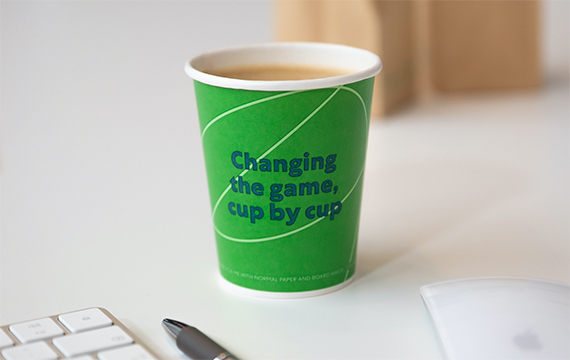More news
- Focus on industrial: Powering the energy industry during extreme heat
- Focus on powder coatings: The coatings industry’s transition to PFAS/PTFE-free solut...
- “We see sustainability as a purpose, as a reason for doing business” – P...
- Focus on industrial: High-performance coating protects tanks at biopolymer production plan...
- Focus on powder coatings: Novel high-speed crosslinking technology

From black epoxy adhesives to adhesives for medical wearables, the adhesives industry is making rapid advances in innovations across a wide variety of applications. Here, experts from Panacol detail a few of their latest adhesive technologies
Black&Light: Black epoxies cure under UV irradiation
Panacol has developed a new adhesive technology: deep curing black epoxies. Black epoxy adhesives from Panacol’s Vitralit® product range can now be cured with UV light sources in thicker layers, without resorting to secondary curing mechanisms.
Conventional black UV adhesives have a major disadvantage: the black colour absorbs a high proportion of the UV intensity, which means that the energy needed to fully polymerise an adhesive can only penetrate a few micrometres. This results in surface “skin” formation on black adhesives, but not a complete cure. They must then be cured in a secondary thermal curing process at temperatures above 100°C.
Panacol’s new “Black&Light” technology enables the complete curing of black epoxy adhesives with LED UV energy. Depth of cure can range from a few hundred micrometres to several millimetres. The adhesives are suitable for encapsulation, glob top, or edge bonding in electronics manufacturing, as well as for optical adhesive systems where high OD values (optical density) are required. They are suitable for optoelectronic applications to help minimise reflections and enhance sensor transmission values.
A typical manufacturing process using “Black&Light” technology can be as follows: The black adhesive is dispensed and cured with the appropriate wavelength and intensity. During the curing process, the “Black&Light” technology within the adhesive enables the UV rays to penetrate and complete a full cure. Once the adhesive polymerisation is complete, the structure of the “Black&Light” technology prohibits light transmission, resulting in a fully cured adhesive system that remains irreversibly black.
The “Black&Light” technology is compatible with many Vitralit® epoxy adhesives from Panacol. Custom adhesive solutions can be created to accommodate unique requirements for amount of light blocking and depth of cure. The “Black&Light” adhesive systems can be very specifically adapted to specifications of the respective application.
Another major advantage of the “Black&Light” adhesives is storage. Many single-component, black epoxies require deep frozen transportation and storage. The “Black&Light” epoxy adhesives can be stored and shipped at room temperature or under normal refrigeration.

READ MORE:
How to use starting point formulations for easier formulating of acrylic waterborne paints
Special adhesives for medical wearables
Wearable patient monitoring devices are worn directly on the body and are being used in increasing numbers. These devices include diabetes sensors for monitoring blood glucose levels (GCM), as well as wireless monitors that transmit patient information to healthcare providers. They must be reliable and durable, while also safe for direct skin contact. Panacol has developed a broad portfolio of speciality adhesives for this purpose that meet the stringent demands imposed by medical device manufacturers. To be able to provide a complete bonding solution, Panacol teamed with metering equipment manufacturer Scheugenpflug and UV equipment manufacturer Dr. Hönle. A system concept was identified and successfully tested that enables precise metering for the dispensing of low volumes of UV adhesives with integrated LED UV curing.
Panacol’s medical device adhesives exhibit excellent adhesion to commonly used medical-grade substrates, including polycarbonate, polyimides, polyamides, stainless steel and ceramic. These adhesives are tested for biocompatibility in accordance with ISO 10993-4/-5/-10/-23 and/or USP Class VI protocols.
This group of adhesives includes LED curable UV acrylates and UV epoxies, which provide the shortest curing cycle times for high volume production. They are ideal for needle/hub assembly, component attachment and for sealing enclosures. Multiple viscosity ranges are available to provide the best match to component configuration and assembly process. Fluorescing versions are available to enhance quality control relying on in-line vision systems.
Also included in this group are electrically conductive adhesives and conventional thermosetting epoxies. They offer connectivity and attachment solutions for PCB and electrical component assembly. Several epoxy selections are available with high ionic purity, which is essential to minimise the risk of corrosion on the PCB. Panacol’s silver-filled electrically conductive adhesives can often replace solder joints or be applied on bendable or flexible wearables.
Accurate and consistent adhesive dispensing is mandatory when assembling medical devices. For the small dispensing volumes, the best choice is the high-precision DosPL DPL2001 micro dispensing head from Scheugenpflug, part of the Atlas Copco Group. This allows highly accurate application of the adhesives even for the smallest volumes down to the µl range. This allows glob tops to be reliably set to 0.003ml, dispensing accuracies of less than 0.5% to be achieved, and the thinnest lines to be made on the plastic housing with precise start and stop.
The dispensing head works on the principle of volumetric dispensing. A control system reliably detects viscosity fluctuations and ensures consistently high precision of the bonding contour.
The curing or hardening of Panacol’s UV acrylate and epoxy adhesives can be achieved in seconds due to their uniquely formulated compositions. LED curing systems from industry leader Dr. Hönle enable maximum optimisation of the curing process. This ensures the shortest curing cycle time and the highest thruput. In the tested system concept, Hönle’s LED Spot 40 IC, with a wavelength of 405nm was used. The compact design of this LED head allowed it to be integrated with the DosPL DPL2001 dispensing head into Scheugenpflug’s DispensingCell DC803 multifunction robotic cell. This work cell permits components to remain in one position for both dispensing and UV curing processes. Parts handling is minimised, along with the risks of component movement, contamination and adhesive migration. This integrated system concept ensures the adhesive bonding process is performed to the highest quality standards with the greatest efficiency. Whether batch production or continuous flow, integrated adhesive bonding systems from Panacol, Scheugenpflug and Hönle meet the demanding production requirements for medical wearables.

Caption: Wearable diabetes sensor
New adhesives for flexible photovoltaics and electronic applications
Organic photovoltaics (OPV) and Perovskite-based systems are creating radically new applications in consumer electronics. They include indoor light harvesting to extend battery life of wearables and outdoor energy generation, with performance in regard of their flexibility previously unimaginable from conventional photovoltaics. The same is true for flexible electronics. A key contributor to these advancements has come from progress in bonding technologies. Panacol accompanies these developments by providing high tech adhesives that elevate flexiblehotovoltaics to the next level.
Today’s adhesives go beyond the basic benefits of sound structural bonding by providing additional functionality to the assembly. Panacol has successfully developed a range of multi-functional adhesive selections for applications in flexible photovoltaics and electronics. For OPV applications, these adhesives provide higher resistance to environmental stresses, an improved compatibility to the PV material and a good adhesion to the substrates. New conductive adhesives efficiently adhere and protect electrical connections for SMD components in flexible assemblies.
In all cases, the specific requirements of the application and its assembly process are key factors to consider when making an adhesive selection. Significant benefits can be realised when an optimal pairing is achieved with the component design, assembly, (UV) adhesive properties and the curing process. High throughput processes, including roll-to-roll can be run with greater efficiency which reduces total cost of operation. The adhesives requirements such as flow properties can be modified in this context to suit the application process perfectly.
As new designs are evolving rapidly, very little standardisation exists in the manufacturing of OPV. To support this evolution, adhesives must be modified or developed to meet the customers’ unique OPV design, materials and processes. Panacol has anticipated this need and is prepared to work with manufacturers to provide adhesive customisation and development as quickly as possible.







